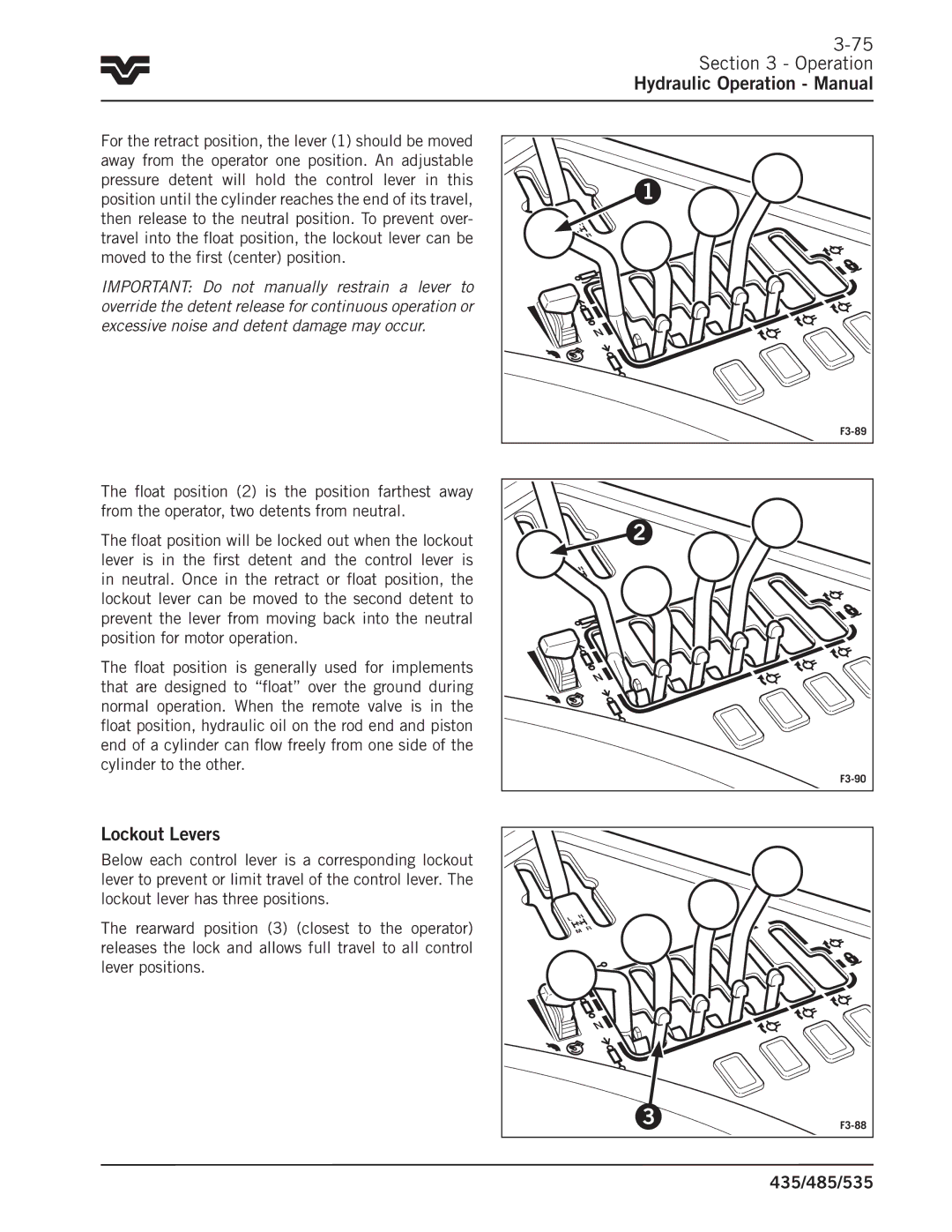
3-75 Section 3 - Operation
Hydraulic Operation - Manual
For the retract position, the lever (1) should be moved away from the operator one position.. An adjustable pressure detent will hold the control lever in this position until the cylinder reaches the end of its travel, then release to the neutral position.. To prevent over- travel into the float position, the lockout lever can be moved to the first (center) position..
IMPORTANT: Do not manually restrain a lever to override the detent release for continuous operation or excessive noise and detent damage may occur.
The float position (2) is the position farthest away from the operator, two detents from neutral..
The float position will be locked out when the lockout lever is in the first detent and the control lever is in neutral.. Once in the retract or float position, the lockout lever can be moved to the second detent to prevent the lever from moving back into the neutral position for motor operation..
The float position is generally used for implements that are designed to “float” over the ground during normal operation.. When the remote valve is in the float position, hydraulic oil on the rod end and piston end of a cylinder can flow freely from one side of the cylinder to the other..
Lockout Levers
Below each control lever is a corresponding lockout lever to prevent or limit travel of the control lever.. The lockout lever has three positions..
The rearward position (3) (closest to the operator) releases the lock and allows full travel to all control lever positions..
|
| 1 |
|
|
| R |
|
|
| N |
|
|
|
| |
|
| 2 |
|
| H |
|
|
|
| N |
|
|
|
| |
L | H |
|
|
N |
|
| |
| R |
| |
| M |
| |
|
|
| |
|
| N |
|
|
| 3 | |
|
|
| 435/485/535 |
